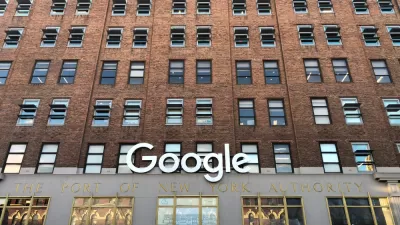Unlike the earlier iteration, today's full-amenity tech campuses provide their well-paid engineers with Millennial-friendly upper middle class comforts. But is that enough?

In a piece for Architecture Boston, Allison Arieff discusses how modern high-tech office parks differ from Pullman's old company town—and how they're similar. Back then, and perhaps today, "This generosity was less altruistic than strategic: Companies could improve working conditions while deterring workers from activism and unionization. Employees were taken care of but had no autonomy."
Providing table tennis tables for Millennial employees is one thing (we love ourselves some ping-pong), but housing them is another matter. But in places like the Bay Area, it might just make sense. "It is not surprising then, in hot markets that accompany the healthiest economic ecosystems, that housing might be seen as the ultimate amenity. It certainly is becoming an obstacle, if not the biggest obstacle, to hiring in these locations."
Old-school company towns were supposed to be blue collar utopias. But today's version serves a more stratified demographic. "These 'new towns' are more New Urbanist than Manhattan-ish. [...] Company Town 2.0 is a walkable, amenity-rich offering for highly paid knowledge workers that has emerged as an indispensable tool for hiring the better engineer."
The word "campus" is very apt. Arieff writes, "the emerging model may be less company town and more postcollege campus, as exemplified by the new 'community-driven living concept' developed by the co-working start-up WeWork. It's called 'WeLive.'"
FULL STORY: Company town 2.0

Planetizen Federal Action Tracker
A weekly monitor of how Trump’s orders and actions are impacting planners and planning in America.

San Francisco's School District Spent $105M To Build Affordable Housing for Teachers — And That's Just the Beginning
SFUSD joins a growing list of school districts using their land holdings to address housing affordability challenges faced by their own employees.

The Tiny, Adorable $7,000 Car Turning Japan Onto EVs
The single seat Mibot charges from a regular plug as quickly as an iPad, and is about half the price of an average EV.

Seattle's Plan for Adopting Driverless Cars
Equity, safety, accessibility and affordability are front of mind as the city prepares for robotaxis and other autonomous vehicles.

As Trump Phases Out FEMA, Is It Time to Flee the Floodplains?
With less federal funding available for disaster relief efforts, the need to relocate at-risk communities is more urgent than ever.

With Protected Lanes, 460% More People Commute by Bike
For those needing more ammo, more data proving what we already knew is here.
Urban Design for Planners 1: Software Tools
This six-course series explores essential urban design concepts using open source software and equips planners with the tools they need to participate fully in the urban design process.
Planning for Universal Design
Learn the tools for implementing Universal Design in planning regulations.
Smith Gee Studio
City of Charlotte
City of Camden Redevelopment Agency
City of Astoria
Transportation Research & Education Center (TREC) at Portland State University
US High Speed Rail Association
City of Camden Redevelopment Agency
Municipality of Princeton (NJ)





























